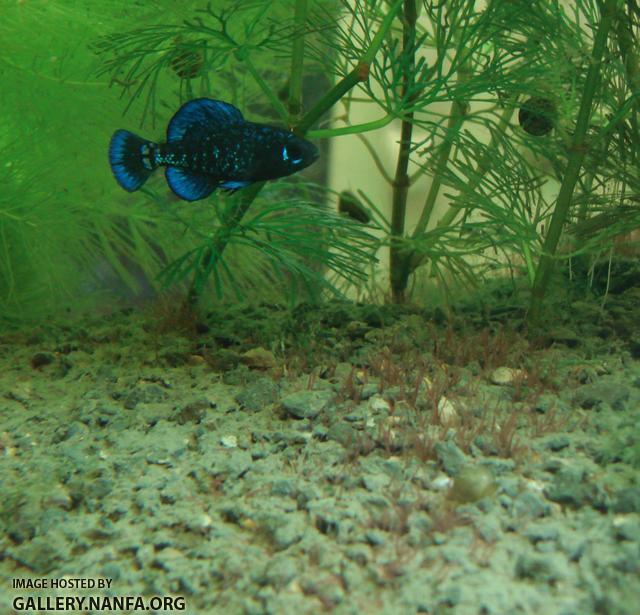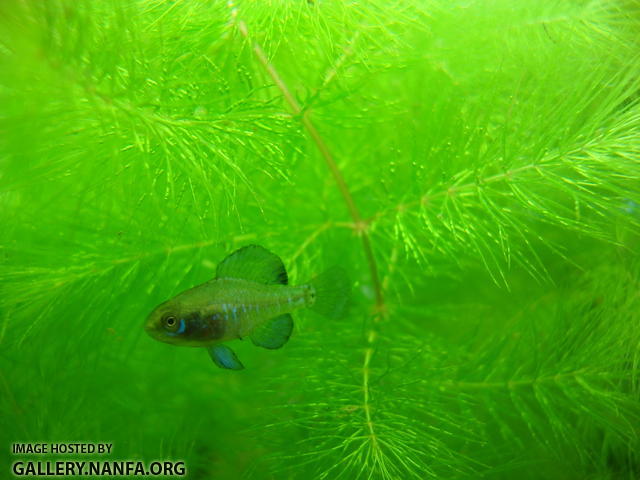In tank daphnia culture?
#1
 Guest_Joshaeus_*
Guest_Joshaeus_*
Posted 28 April 2014 - 07:40 AM
#2
 Guest_Erica Lyons_*
Guest_Erica Lyons_*
Posted 28 April 2014 - 08:05 AM
Also, keeping a food population in the tank with the elassoma will lead to the shyest elassoma you (n)ever saw. Unless you drop food in daily to teach them that you are the foodbringer and not to be feared, they will hide when you approach the tank.
#3
 Guest_WyRenegade_*
Guest_WyRenegade_*
Posted 28 April 2014 - 09:02 AM
#4
 Guest_gerald_*
Guest_gerald_*
Posted 28 April 2014 - 11:57 AM
#5

Posted 28 April 2014 - 01:02 PM
... The elassoma will sooner or later eat them all.
...Also, keeping a food population in the tank with the elassoma will lead to...
Totally agree with EL here. First of all, just because they are small, you have to realize that these guys are just voracious micro-predators and right after they are full and fat and happy... the dancing will begin... and then you will have more Elassoma... and then they will help eat the daphnia...
#6
 Guest_Erica Lyons_*
Guest_Erica Lyons_*
Posted 28 April 2014 - 01:25 PM
I did it, in my 55 gallon tank. The blackworm population lasted for around three months. I wouldn't do it again, though, because they hid from me.I know that some individuals have been able to establish in tank cultures that have maintained long term. I would imagine that to some degree at least some of that has to do with stocking levels of fish in the tank and establishment of hiding places for the microfauna.
Here's a picture of an elassoma gilberti (Tallahassee) guarding prime blackworm territory. This is a rare photo taken from far far away using the zoom on my camera.

http://gallery.nanfa...3-4/photo 3.jpg
That photo was taken on March 23rd, 2011. Here's another photo taken on March 23rd, of a fish who is washed out clear from fear because I'm looking at him. This was much more typical of your average photo from that tank at that time.

http://gallery.nanfa...7-4/photo 2.jpg
Here is a video I captured on that same day: March 23rd 2011. You can see there are fish who would prefer to hide than be seen by me. These were actually young that I hand raised, too, so basically the tamest juveniles you can start out with. But since their food was in the tank and they didn't need to come forward, they preferred to stay in the back.
http://youtu.be/4Gc4HzH4a24
youtu.be/4Gc4HzH4a24
For comparison's sake, here is a video I captured of a descendant of that population of fish a few months later on August 23rd 2011. I had stopped trying to have an in-tank population of food and switched to dropping food in every day.
http://youtu.be/wUPoIDsLmYI
youtu.be/wUPoIDsLmYI
Dropping food in teaches them to associate your human presence with food. They learn that when the human and the camera appear, so does food.
#7
 Guest_Joshaeus_*
Guest_Joshaeus_*
Posted 28 April 2014 - 03:46 PM
#8
 Guest_WyRenegade_*
Guest_WyRenegade_*
Posted 28 April 2014 - 04:40 PM
#9
 Guest_gerald_*
Guest_gerald_*
Posted 29 April 2014 - 12:02 PM
Hmmm... if a fish eats little pieces off the worms and they keep growing back, is that parasitism rather than predation? |;>0
#10
 Guest_centrarchid_*
Guest_centrarchid_*
Posted 29 April 2014 - 02:54 PM
0 user(s) are reading this topic
0 members, 0 guests, 0 anonymous users









